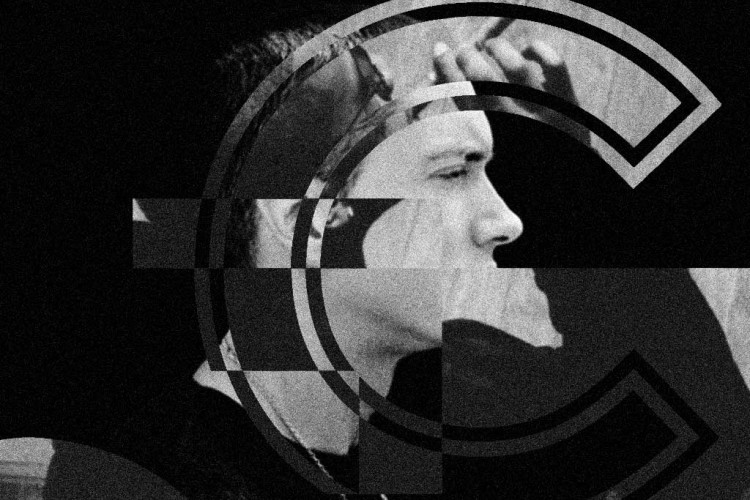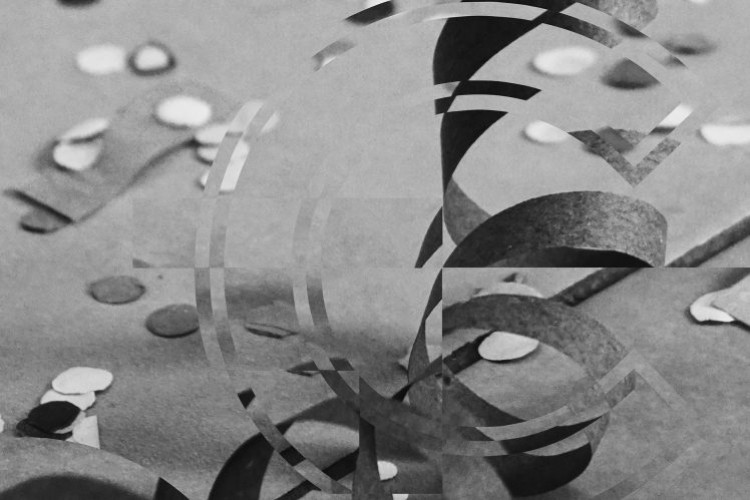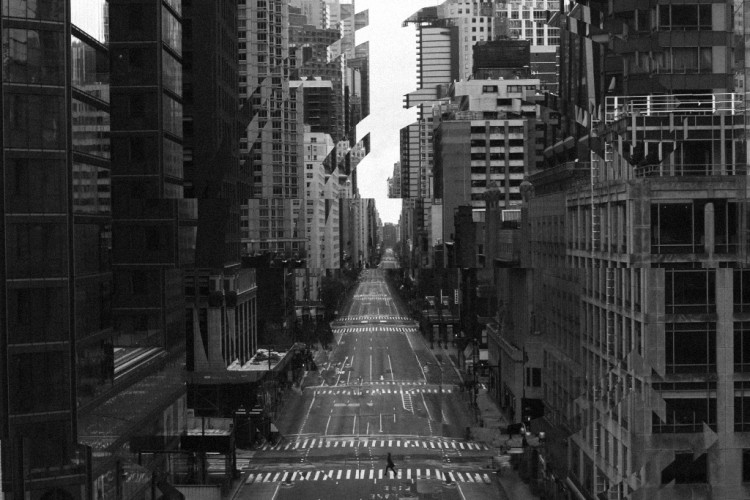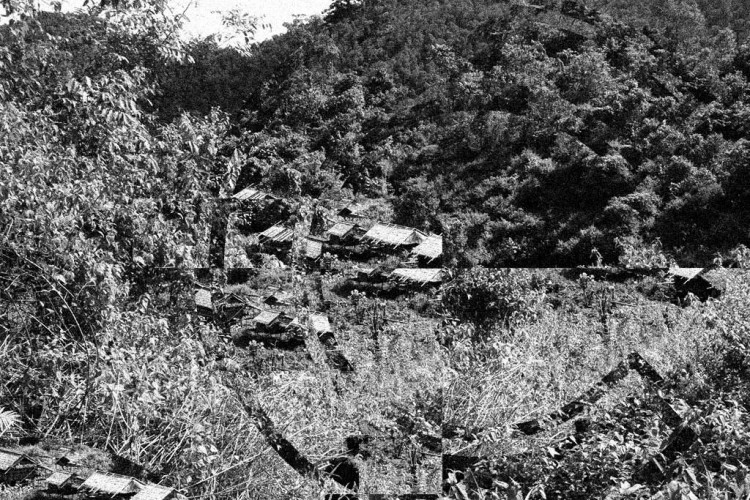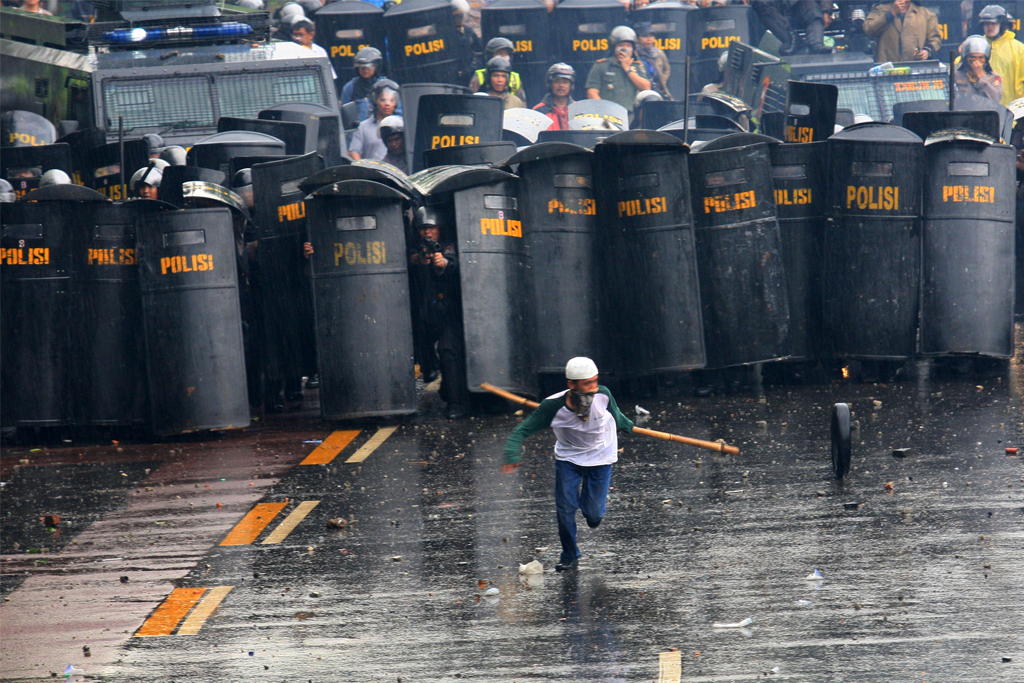
I.
This political year, we have all been treated to nostalgic throes of nationalism in its many forms, but none had been more theatrical than the day that Jalan Imam Bonjol, a main road in Central Jakarta, was suddenly bursting at the seams with a sea of bronze and white that managed to replace the usual traffic elements consisting of automobiles and motorcycles.
On that day, one of the presidential candidates contesting for power decided to invite his entire white-clad entourage to march to the office of the General Elections Commission in order to register himself in the upcoming elections.
The street – which on a normal day could be nominated as one of the city’s most comfortable promenades – hosted a crass, politically charged affair that, in addition to displacing the motorized vehicles it was originally intended for, also ruined the green belt along the entire road.
But behind its propagated political symbolism and destructive potential, the act of walking triumphed as a means to project one’s ideas and allowed him or her to attach meaning to the spaces that are traversed and occupied.
According to writer Rebecca Solnit, “parades, protests, uprisings and urban revolutions are all about members of the public moving through the public space for expressive and political rather than merely practical reasons. In this, they are part of the cultural history of walking.”
The street became a means for social expression, a place where members of the public could participate in a shared existence. And walking itself became a political vehicle, temporarily disconnected from its arbitrary function of bringing us from point A to B.
A civilian walking with purpose on the street was akin to an artist painting with his brush on a tabula rasa, in that they not only actively participate in making their own life, but also in the life of the community. The expressions one parades become a shared experience in the public sphere.
French historian Alexis de Tocqueville put it in other terms in his Democracy in America:
“In cities men cannot be prevented from concerting together, and awakening a mutual excitement which prompts sudden and passionate assemblies.”
Thus, walking in the city effectively becomes an exercise in civic participation, and the city’s public spaces the main arena for democracy to flourish.
II.
It may not look like it now, but Jakarta has had a long history of accommodating the gait of civic participation.
In my previous article, I mentioned that we should look toward redefining underutilized public spaces with the help of a traditional, inclusive urban planning concept that emphasizes social interaction, namely the alun-alun.
According to social theorist Merlyna Lim, the alun-alun has always been the main site of people struggling against the authorities in the country’s long history of popular movements.
Lim said that Jakarta – or Sunda Kelapa as it was known in the pre-colonial period – featured a town center with an alun-alun – a main square with the king’s palace on the south side and a mosque on the west side, which is in accordance with Javanese town planning principles.
The alun-alun was created as a space where “the sacred and profane would meet, a symbol of the sovereign’s humility.”
The masses would meet their rulers in a “middle ground”; by walking side-by-side with their leaders on the streets and in city squares, the people would feel bound to their leaders by a shared purpose, but without the damning homogeny and distance of military congregations.
They shared the earth with their rulers, and it is this eschewing of status that empowers the populace and turns them into active civilians.
During the Dutch colonial occupation, the alun-alun gave way to the more Western public parks and plazas, bringing with it the act of promenading; another charged definition of walking that flaunts exclusivity by walking in privileged areas.
In spite of this, the public would still have access to these spaces – however restricted they seemed.
Two of the most prominent plazas, the Stadthuisplein and the Koningslplein, were places where “parades were held and common people went to take in fresh air.”
Nowadays, the Stadthuisplein is known as Taman Fatahillah, and remains the heart of the city’s historical district, whereas the Koningsplein was converted into the city’s true center, Lapangan Monas.
During the fall of Soeharto in 1998, Lapangan Monas, along with Bundaran Hotel Indonesia and the House of Representatives office, turned into spaces of insurgence and major protest, at once overturning the symbolic and historic representation of state power in Jakarta.
In all instances, these civic spaces were not political on their own regard; they required people to occupy them and impregnate them with meaning.
In other words, the walkers of the time not only traversed through the city, they made sense of the city as a place for common experience.
III.
It was French philosopher Michel Foucault who said, “Space is fundamental in any exercise of power.”
And in my opinion, this maxim cannot ring truer when we see Jakarta as Indonesia’s cradle of power.
The private sphere in Jakarta is a pseudo-social representation of class segregation. Towering condominium buildings and multi-block residences are juxtaposed with shantytowns and row houses for the poor.
Even the spaces between them – the public domain – are segregated on multiple levels; toll roads filter those with access to private transportation, while damning others to hours of traffic; the lack of sidewalks prevents people from walking safely, while those with motorized vehicles take precedence in the daily influx of people throughout the city.
In order to “take back the streets,” we need to open up access to all these places by occupying them the way history has taught us; by walking alongside one another and providing opportunities for social integration through shared experiences.
Marco Kusumawijaya, celebrated local architect and urbanist, understood the public as being quite clueless as to how they should act in the public sphere, as there is barely a consensus on civic conduct in the public domain.
As a result, the government could easily dissuade people from using public facilities, while those exhibiting antisocial behavior could alienate others from even trying them.
Marco suggests that social interaction is imperative in the public sphere as it provides “basic welfare” for all without excluding any segment of society.
He insisted that the streets serve as a socio-cultural space for the people to congregate, and that this could in turn lead to more socially inclusive society.
Walking with a purpose to congregate is by far the easiest way to start. Almost everyday in the capital, we have an infinite number of causes to occupy a space and provide it with meaning. This is why Merlyna Lim calls Jakarta a demopolis: a city of demonstration(s). We work, we play, we protest. We share experiences, ideas and trust.
If all it takes is a simple act of meeting people “in the middle,” why should we wait until the spaces are designated for us?








